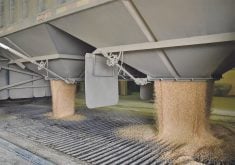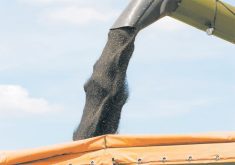Don’t give up on new crop contracting.
Any other year, the new crop prices emerging for 2022 would be a dream come true. Any other year, these sorts of values would generate a sign-up frenzy. Instead, producers are hesitant and wary and you can’t blame them.
New crop yellow peas are being quoted in the $12 to $13 per bushel range. Flax is an amazing $24 a bu. in some new crop contracts. Top quality durum is as high as $13 a bu. in some areas.
Canola can fluctuate greatly in just a few days but new crop values of around $16 a bu. have been available. New crop yellow and brown mustard are both over 55 cents a pound with canaryseed at 35 cents.
Read Also

Invigor Gold variety viewed as threat to condiment mustard
Invigor Gold, the canola-quality mustard developed by BASF, is on a collision course with Canada’s condiment mustard industry. It’s difficult to see how the two can co-exist.
Seldom have so many prices been offered so early. Never have new crop price offerings been so high.
However, all the prices are a letdown from current market values. Yellow peas are selling for $17 or $18 a bu., flax is around $45, durum and canola are well over $20, mustard is a dollar or more per lb. and canaryseed is over 50 cents.
This is one reason producers aren’t breaking down doors to sign contracts. Another is all the 2021 contract pain. On deferred delivery contracts, many producers didn’t have the grain to meet contract obligations and had to buy their way out of contracts.
Sometimes this was tens of thousands of dollars and sometimes hundreds of thousands. Stories are circulating about a few farms with buyouts in excess of a million dollars.
On many of the minor acreage crops, production contracts are offered with an Act of God clause, which protects against crop failures. While producers didn’t have to buy their way out of these contracts, it’s still painful to sell your meagre harvest at a price that in many cases is less than half of the current market.
On top of the above two reasons, drought remains a serious threat in many regions and is also creating shyness over contract obligations. Even more than usual, producers will be looking for contracts with the Act of God clause.
While contract hesitancy is understandable, this may actually be a prime year to lock in some prices. The current astronomical market prices would seem unsustainable. Contract prices could look attractive by next fall.
Grain companies are hungry for business and there’s a fight for acreage among all the commodities. Contracting is a way for producers to potentially take advantage of the situation.
If you’re able to grow a decent crop, contract price levels will be hugely profitable and contracts can help guarantee delivery.
Maybe another big production shortfall will keep grain prices strong, but it’s hard to believe prices in the stratosphere can be maintained indefinitely. It’s also difficult to believe a drought in 2022 will be as widespread as the epic dryness and heat experienced in 2021.
Some producers were overly aggressive with contracts for 2021 believing they could never have such a huge crop failure. For 2022, the opposite could easily happen. Producers could be so contract shy that they miss the best new crop prices ever.
No one can see the future and no easy answers exist. Everyone has to make their own determinations based on their situation and risk tolerance. While many factors need to be considered, new crop contracts shouldn’t be summarily rejected just because of this year’s extraordinary circumstances. No two years are the same.
Kevin Hursh is an agricultural journalist, consultant and farmer. He can be reached by e-mail at kevin@hursh.ca.
















